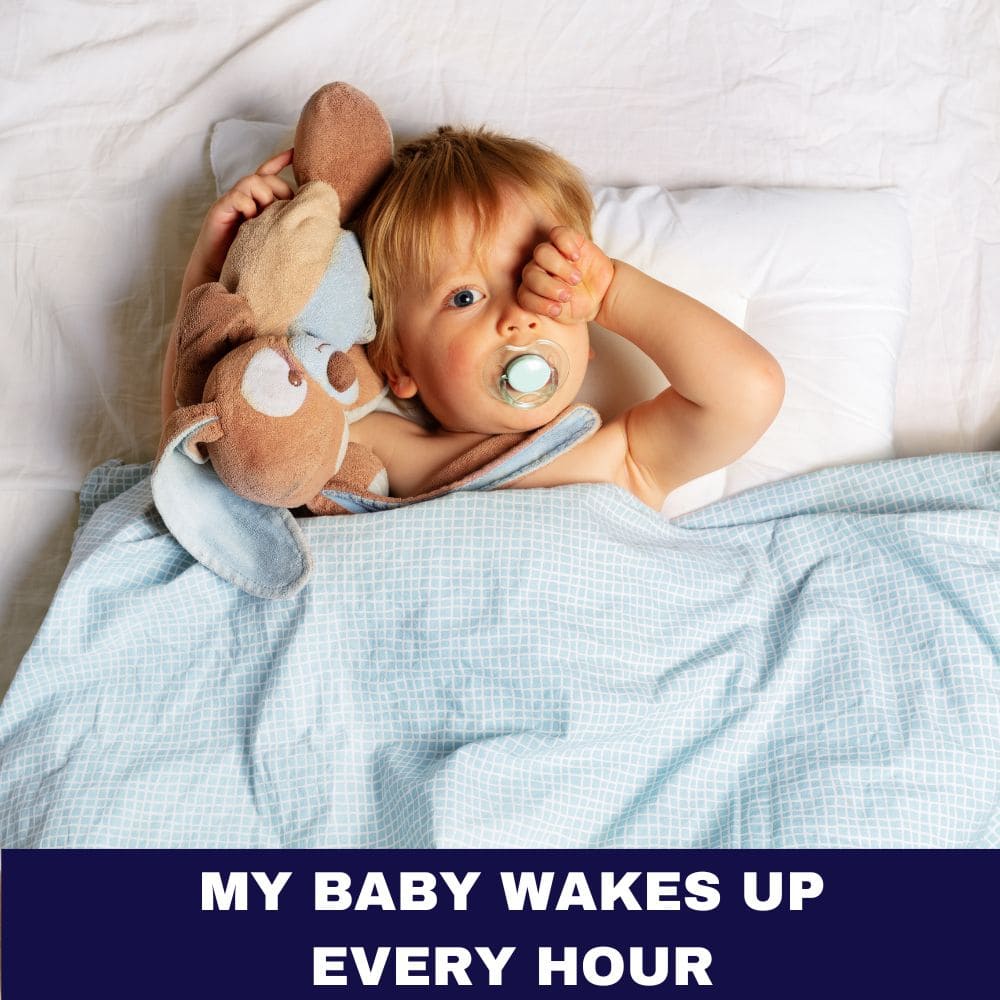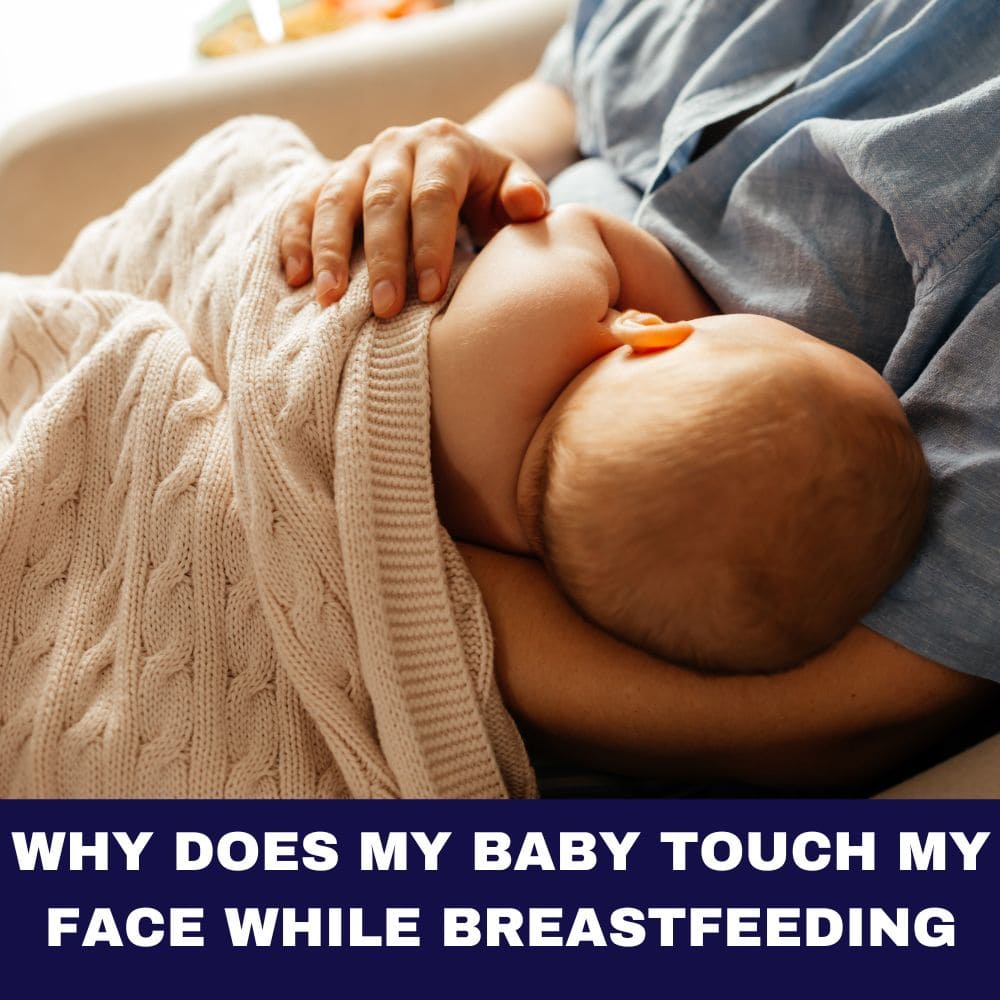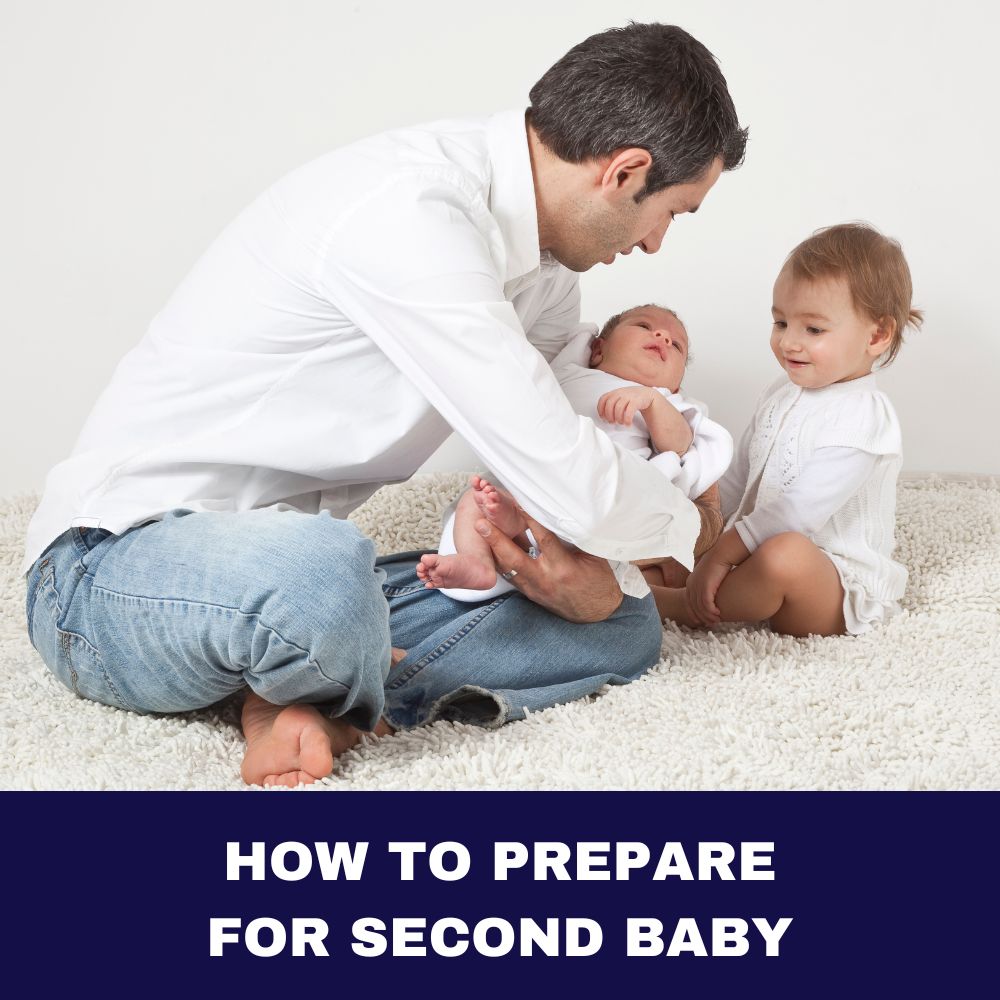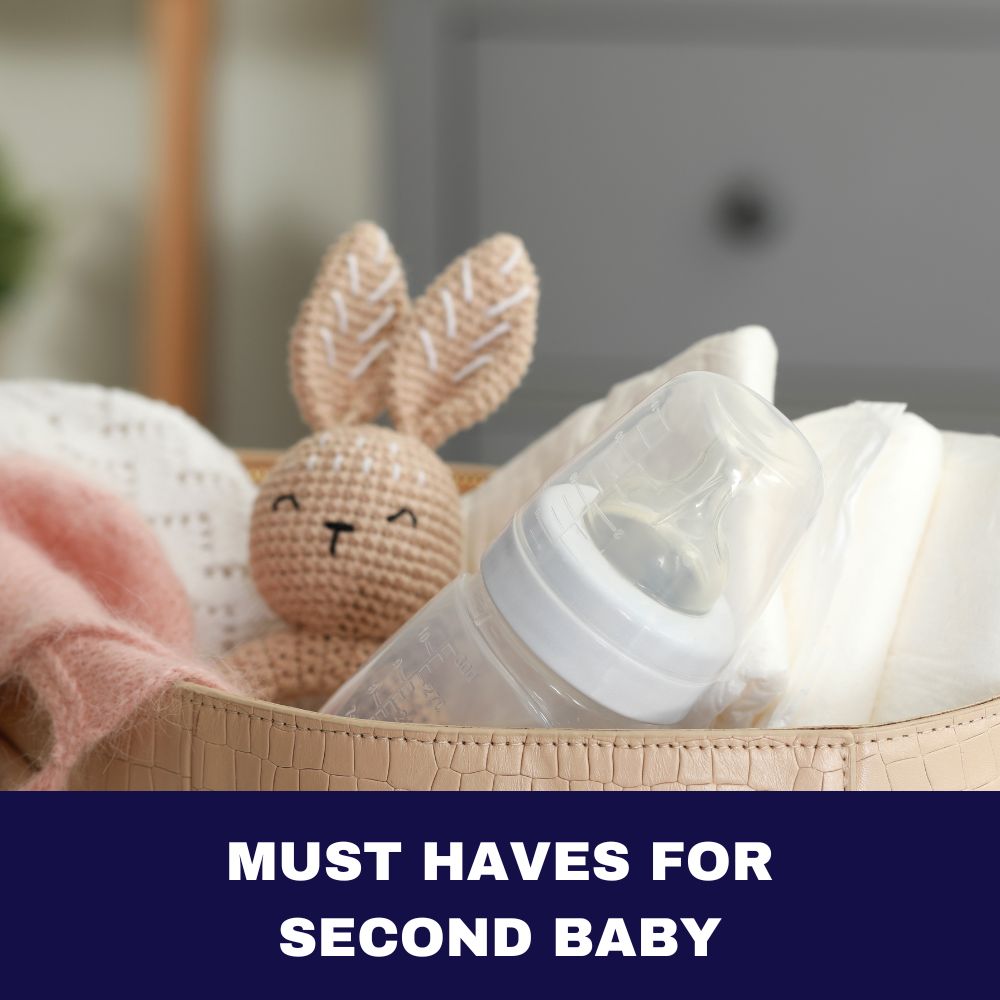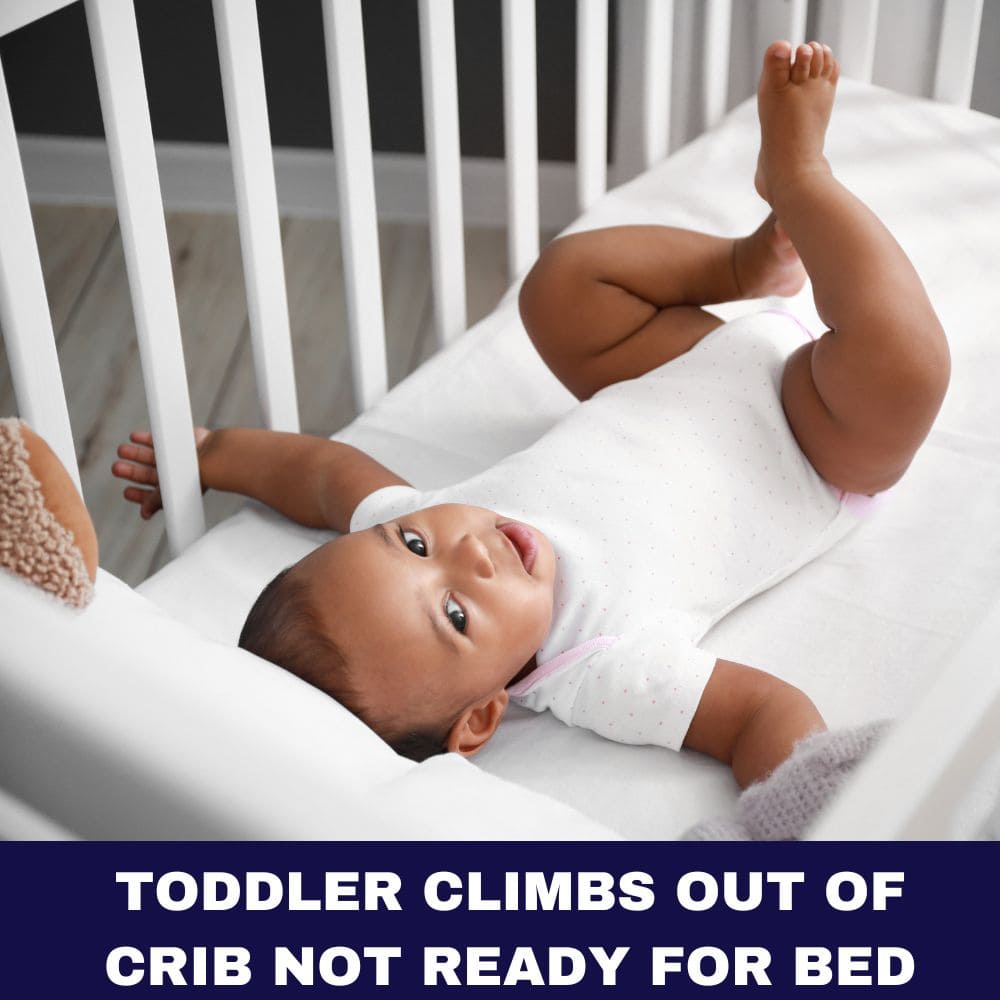As a new parent gazing affectionately at your tiny, adorable bundle of joy, those first few weeks fly by in a blur of feedings, diaper changes, and sweet snuggles. Before you know it, your little one starts to transform right before your eyes – they sleep a bit longer, show more facial expressions, and push up stronger on those wobbly little arms.
You may be wondering to yourself the question many new parents have – when is a baby not a newborn anymore? At what point does my baby graduate from that delicate newborn phase marked by eat, sleep, poop cycles and fuzzy newborn haze? Have no fear, new mama and papa. I’ve done the research to uncover answers on exactly when a baby exits the newborn stage and transitions to older infancy. And what developmental differences can you expect as your tiny babe evolves? I’ve got you covered there too!

Defining the Newborn Phase
Medically speaking, a newborn is defined as a baby from birth to about one-month-old or 4 weeks. Those first 4 weeks of your baby’s life mark a very special phase – their entrance into the outside world and transition from the comfort of your womb. They’ll spend these days and nights snuggled up skin-to-skin, feeding frequently, and getting acquainted with their parents through lots of eye contact, facial expressions, and responsive crying to communicate needs. Experts consider the “fourth trimester” or first 3 months to be a continuation of your baby’s gestational development…which means lots of eating, sleeping, pooping, and cuddling to nurture the baby through this sensitive period.
Know that every baby develops differently, but you can generally expect your tiny cherub to sleep around 16 to 18 hours per day, with frequent 2 to 3-hour feeds in their waking windows. Their vision will sharpen, muscles strengthen slightly, and they’ll begin to follow objects and recognize familiar people. But don’t go decorating the nursery just yet – at this age, they can’t make out much beyond your face when you hold them about 8 inches away. Physical milestones like umbilical cord healing, weight gain, and jaundice fading will be top priority as you both recover from birth.
This newborn period is indeed a sacred, fleeting time…but it can also be quite draining on Mama! Take time to recover, embrace those hilariously long newborn naps when you can, lower your standards on the home front, and fall hopelessly in love with your little bundle. The dishes can wait – just stare into that angelic face and those captivating eyes; this phase goes so fast. Soon enough baby girl or boy will transform before your eyes into a more alert little person with increasing needs…which brings me to our next question!
When Does a Baby Transition From Newborn?
While every baby is unique, you can generally expect your little pumpkin’s newborn behaviors, sleep patterns, and care needs to shift noticeably around 4 weeks old. Right around a month, your babe will begin acting less like a floppy newborn that just eats, sleeps, and poops the day away. You may notice longer alert periods, more identifiable awake/sleepy cues, longer naps, and higher fussiness needing your care and affection to soothe.
The timing of moving from newborn to infant status depends slightly on whether the baby was born prematurely — a late preemie of 34-37 weeks may hit their “4-week shift” closer to what would have been 40 weeks gestation. But for the most part, care teams see babies change drastically around 4 weeks old.

Physical Development Differences
Over the first month, that wobbly bobblehead becomes stronger, watching and following motion better by 3-4 weeks old. Where bright colors and contrasts attracted their gaze as newbies, now mobiles, mirrors and picture books hold some interest for awake time. You’ll notice fingers getting grabbed, portability to baby carriers or strollers, and longer torso control when upright.
Expect the baby’s weight to double by this 4-week mark as your milk supply regulates. They’ll need to eat frequently, averaging 8-12 feeding sessions per 24 hours. As your due date approaches, babies drop from 6-8 poopy diapers daily down to 3-4 yellow seedy ones. Beyond the 4 week shift, growth charts diverge between newborns and infants — weight gain should hit 6-8 ounces per week, height upticks by half an inch per month, and heads expand almost a centimeter weekly.
Brain and Immune Development
Following birth, babies experience rapid brain growth setting overlying neural connections in place. The occipital lobes managing vision mature exponentially, supporting clearer scanning of environments, objects and faces. Around the one-month mark, infants can track to about 12 inches versus the 4 inches of a newbie.
Immunologically, newborn defenses operate below par as their systems calibrate after leaving your womb. By week 4-6, IgA antibodies absorbed from breastmilk offer pathogen protection. Vaccines also kick in around a month out to build defenses against severe infections.
As you approach six months, be sure the baby is meeting milestones like visually tracking, holding their chest upright, bearing some weight on legs, rolling over, laughing aloud, and other cognitive gains. If you have any concerns on the baby’s development, don’t hesitate to ask your pediatrician!
Sleep Pattern Changes
While newborns snooze hard right after feeding, infant babies start consolidating sleep into longer nighttime stretches around 4-8 weeks old. Early bedtimes help extend rests, consistent bedtime routines signal sleepy cues, white noise blocks disturbances…but even so, expect night wakings for comfort feeds as twelve-hour stretches usually come closer to three or four months old. Naps begin consolidating too, going from 30-45 minute catnaps to 1-3 hour morning and afternoon sleeps.
To help encourage self-soothing skills as your baby drops night feeds, implement loving but firm sleep training techniques. Be attentive to distinguish needs cries from fussing as you allow opportunities for them to resettle solo with some babbling or sucking on their hands.
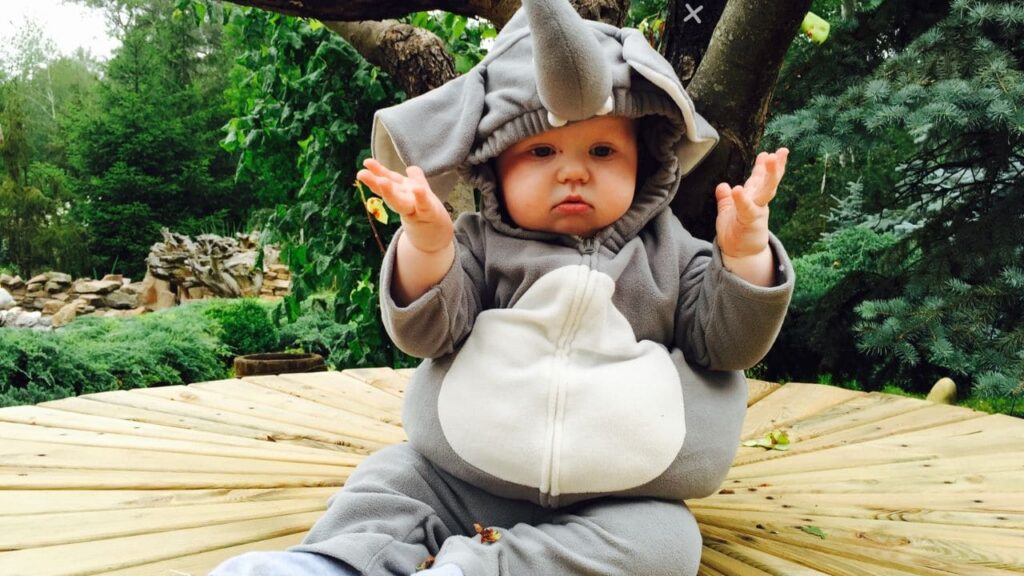
Motor Development
Around a month old, playful coos, strong neck muscles lifting the head upright, open eyes wider than newborns, and longer alert windows all hint baby is transitioning into their infant phase. Gaining control of hands, accidentally swiping or grabbing toys, suggests emerging eye-hand coordination. Better head control enables pulls to stand from prone when upright. And open mouths turn to radical tongue thrusts, ready to try out solid spoon feeds in another month or two.
Milestones to Watch For
- 2-3 months: holds head steady unassisted plus chest/abs, opens hands often, smiles spontaneously
- 4 months: rolls front to back, Laughs aloud, steady when supported standing, pays attention to own name
- 5 months: sits with support, mouth exploration/drooling, tries to reach objects, transfers items between hands
- 6 months: rolls back to front, sits unassisted, eye pincer grasp emerges to pick up foods or toys
While celebrating these motor gains, keep safety top of mind too! Choose open safe play areas, remain vigilant with supervision, ensure safe sleep practices, and baby-proof aggressively. Consult your doc with any concerns over delayed milestones, and they can evaluate need for Early Intervention therapy. Some “tummy time” play ensures development of appropriate gross motor strength – gently transition baby when fussy after a few moments of play.
| Newborn | Jaundice, diaper rash, umbilical stump care, fever risk, stuffy nose |
|---|---|
| 1 Months | Persistent jaundice, allergy onset (eczema, wheezing), ongoing umbilical healing, possibility of minor infection like thrush (oral yeast) |
| 3 Months | Persistent jaundice, allergy onset (eczema, wheezing), ongoing umbilical healing, the possibility of minor infection like thrush (oral yeast) |
| 6 Months | Very low jaundice levels; further teeth pushing through tender gums; potential intro to solid food allergies; exposure to hand/foot/mouth disease from increased mouthing behaviors |
Feeding Changes
Around 4-6 weeks, your infant will likely show signs of readiness for some solid foods to supplement breast milk or formula. Open mouth rooting, putting toys or hands in baby’s mouth, watching your food with curiosity, increased drooling, growth spurts and longer sleeps all suggest a maturity where digestive enzymes can support purees.
Begin spoon-feeding highly liquidized veggies as a “before milk” appetizer to ensure the baby reserves a hearty appetite for the main entree: nursing or bottles. Gradually introduce single-ingredient purees moving day-by-day from sweet peas or butternut squash towards eventually adding some iron-rich baby cereal puffs. Towards six months, progressively textured combinations like avocado mash get layered in lunch or dinner menus following full milk feeds the rest of the day.
Respond to hunger/fullness cues over scheduling feeds and increase daily solids consumption as their growth and development advance. By eight months old, hand pincer grasps with dexterity will see them finger-feeding themselves crackers, melty bits of cheese, bananas and toast among other nutritionally balanced additions.
Some parents worry about introducing allergens; unless the baby shows early reaction risks, pediatricians encourage moderate exposures alongside other foods to minimize sensitization. Around nine months old, high allergen foods offer opportunities for developmental gains too – sticky nut butter gluing little hands together, flakes of fish landing everywhere with those erratic arm swings…Keeping these exploratory meals low-stress while still emphasizing table manners sets the stage for later toddler transitions – sensory play and socialization combine for healthy, happy eaters down the line.
Making the Transition Easier on Parents
Shifting from a delicate newborn to a more interactive infant marks quite a transition — one of the biggest to navigate for new parents. As you adjust care routines to your baby’s evolving needs, make self-care a priority too! Struggling through sleep deprivation already leaves mamas and papas emotionally drained, forget adding new developmental challenges.
Here are some tips for parents making the transition from newborn to infant:
Redefine Productivity – Keep standards realistic as growing pains hit. Dishes can wait when the baby demands comfort after sleep regressions or growth spurts. Let go of the pressures to pump out projects while parenting full-time. Survival trumps spotless right now.
Schedule Support – Trusted family or friends that can cover you for power nap breaks, home-cooked meals dropped off, or errand runs make all the difference. Having someone else loving your little one even briefly offers mental health refreshing. Manage expectations here too – not all sitters can soothe a temperamental babe like parents can.
Embrace the Silly – When immobile infants start entertaining themselves, don’t be afraid to join right in with silly songs, peek-a-boo games or funny faces. Laughter truly helps the daily stresses fade. Cameras can help document baby’s playfulness too!
Adjust Expectations – Remember every babe develops differently with surges and plateaus. Definitely keep pediatricians informed on progress, but try not to obsessively compare milestones with friends or family members. Your baby will get there in their own time.
Celebrate the Milestones – While caring for a fussy, clueless newborn exhaustion takes over, and the infant period brings delightful development shining through. Each little coo, sleepy smile and snuggle reminds you why you’re putting in this hard work and makes it all worth it.
Pump Up Positivity – When lacking sleep, it’s easy for irritability to multiply if not careful. Counteract hard days by proactively listing or sharing with your partner a couple of things you admire or enjoy about your baby. Verbalizing the positives helps balance perceptions.
The newborn-to-infant transition remains a period of uncertainty for adjusting parents just trying their best. Let go of pressures to handle it all perfectly. Recognize when you need self-care timeouts from stimulation overload. And if emotions consistently feel beyond coping, consult professionals for added support. This too shall pass, mama! In no time you’ll have a headstrong toddler keeping you on your toes even more.
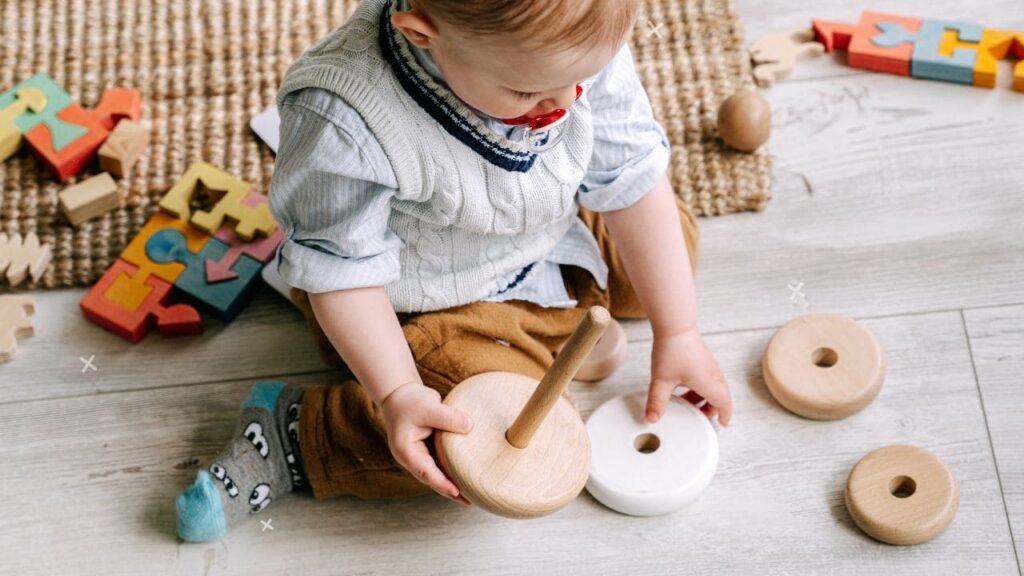
Preparing Home and Family for Baby
Expectant parents often focus nursery planning and gear purchases around the initial newborn phase of infancy. However the shorter duration this usually covers in reality compared to more interactive baby stages that follow means reassessing existing mindsets. Although tempting to emphasize decorating adorable nurseries, stockpiling months of size newborn clothing and collecting every possible soother invented…a baby’s needs significantly change around the one-month mark.
Instead, consider the longer window ahead as an infant. Evaluate how your home environment must evolve structurally to appropriately nurture this growth beyond the fourth trimester. Determine what containment gear will suitably stimulate your baby during extended wakeful periods while allowing caregivers hands-free time. Have sibling hierarchy discussions determining how family roles may shake-up.
The open-concept home flow requires some containment accessories so infants can participate in family gatherings without toppling into fireplaces mid-mid-crawling adventures! Ensure swings, playpens and bouncers have washable padding as messes emerge. Window guarding helps limit smudges or damage from batting hands curious to peer outside. Evaluate existing nursery furniture too – can the change station height be adjusted for standing infants? Does the rocker comfortably accommodate twin feedings when visiting relatives assist?
Incorporate infant milestones when adding gear to baby registries – supporting seats that progress sitting to standing positions as your child grows, open play sets boosting confidence in newly walking toddlers at ten months, and push-pull wagon rides enabling participation outdoors. Consider baby-wearing carriers enabling household task participation for sensory development too. Adjustable highchair trays conveniently attach to kitchen tables for sunlight snacktimes together. Evaluate what existing possessions could reasonably multi-task the next few years with adaptations – that dresser makes a great change table anchored securely. Extend its purpose rather than impulse purchasing specialty items seldom utilized long.
Finally, when expecting new siblings about to upturn family dynamics, emotionally prepare current children so they will always be loved and valued through this adjustment. Consider their developmental stage and understand baby’s needs, allowing participation positively where possible. Temper expectations on their ability to immediately embrace caregiver role shifts after delivery. Reserve one-on-one dedicated time regularly to reconnect affirming the importance. Follow any sibling preparation guidance offered from birthing classes tailored age-appropriate for your kids. While infants demand much time and patience in those early months, the effort taken to secure bonds with current children proves invaluable long-term preventing resentment risks.
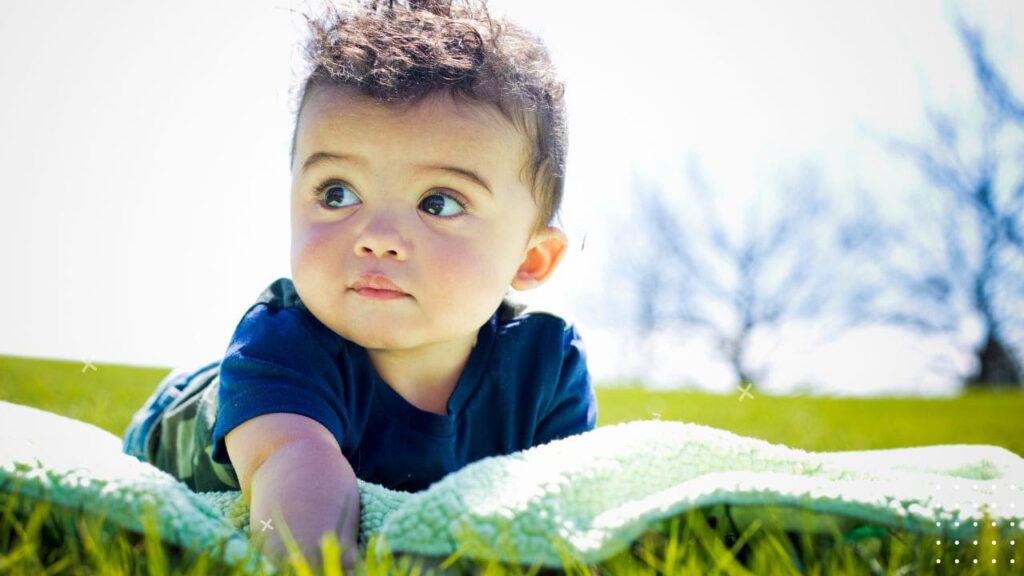
Conclusion
The fourth trimester marks quite a transition for babies entering our bright loud world, as well as exhausted but smitten new parents. When a month passes and families feel they “have this whole baby thing down”, the little one’s needs rapidly change again! Growth accelerates, alertness emerges and motor gains start unfolding daily. Expect the snoozy newborn phase to end abruptly around 4 weeks old as infants show readiness for more play and interaction during elongated wake windows.
Recognizing your baby’s transition from newborn to infant means readying for heightened needs and more frequent tending – but also many heart-melting moments in your direction as the social smiles start appearing. Talk with your pediatrician if those delightful infant milestones concern you with any delays. And parents, treat yourself gently through the learning curve too! Innovate on self-care strategies, shamelessly ask for help when drowning, and soak up the fleeting baby snuggles that somehow balance the chaos out. This phase may feel long in sleepless nights but passes quickly in retrospect. Savor it!
FAQ – When is a Baby Not a Newborn?
When does a baby transition out of the newborn stage?
Most babies transition out of the newborn phase around 4 weeks old. At this age, you’ll notice your baby is more alert, sleeping for longer stretches at night, displaying more facial expressions and reactive cries, and hitting developmental milestones like lifting their head. Premature babies may transition around their original due date. Every baby develops differently, but the 4 week mark is generally when babies grow out of that eat, sleep, poop newborn rhythm.
What physical developments happen when a baby exits the newborn stage?
As your baby leaves the newborn stage, you can expect rapid physical developments like stronger neck and head control, improved hand-eye coordination to swipe at objects, longer torso control from tummy time, doubled birth weight, 50% increase in height by age 1, a doubling of head circumference in the first 3 months, and improvement in focus from 4 inches to 12 inches away. Growth accelerates rapidly after the delicate newborn period.
How do sleep patterns change between newborns and infants?
While newborns sleep 16-18 hours per day in 2-3 hour cycles, infant sleep starts consolidating around 4-8 weeks old into longer nighttime stretches and fewer naps per day. New parents can establish bedtime routines during this time to signal sleep cues. Swaddling transitions around 4 weeks can also unsettle previously predictable sleepers. Gentle sleep training techniques may be introduced around 4 months when developmental leaps hit.
When can you start feeding a baby solid foods?
Look for signs of solid food readiness around 4-6 months, like good head/neck control, curiosity watching parents eat, doubly birth weight, longer sleep stretches indicating sufficient milk calories, and potential teething. Pediatricians often recommend introducing single ingredient purees between 4-6 months, focusing on iron rich and allergen monitoring foods before combining flavors down the line around 8 months as dexterity and digestion improves.
How can I ease the transition for parents from newborn to infant?
The newborn to infant shift brings major changes. Prioritize self-care with breaks, support systems to give you rest, embracing the joys amid challenges, adjusting expectations about capabilities given regression phases, maintaining perspective when comparisons creep in, proactively expressing gratitude for milestones met, and voicing concerns early to your pediatrician if anything worries you developmentally. Recognize emotions may seem magnified with sleep deprivation – seek help if feeling overwhelmed.






